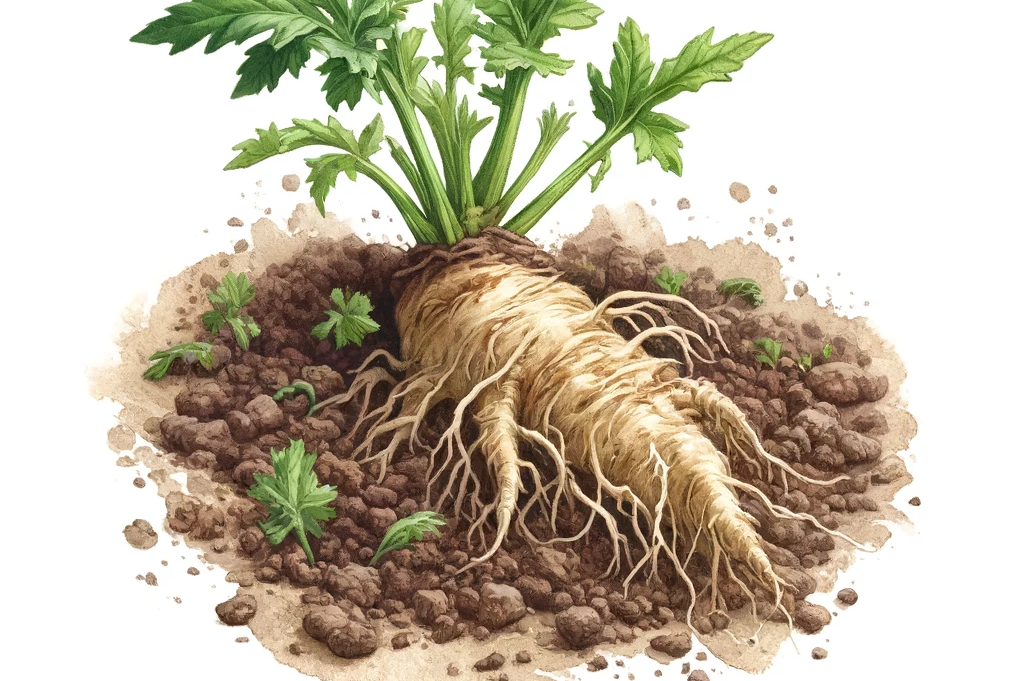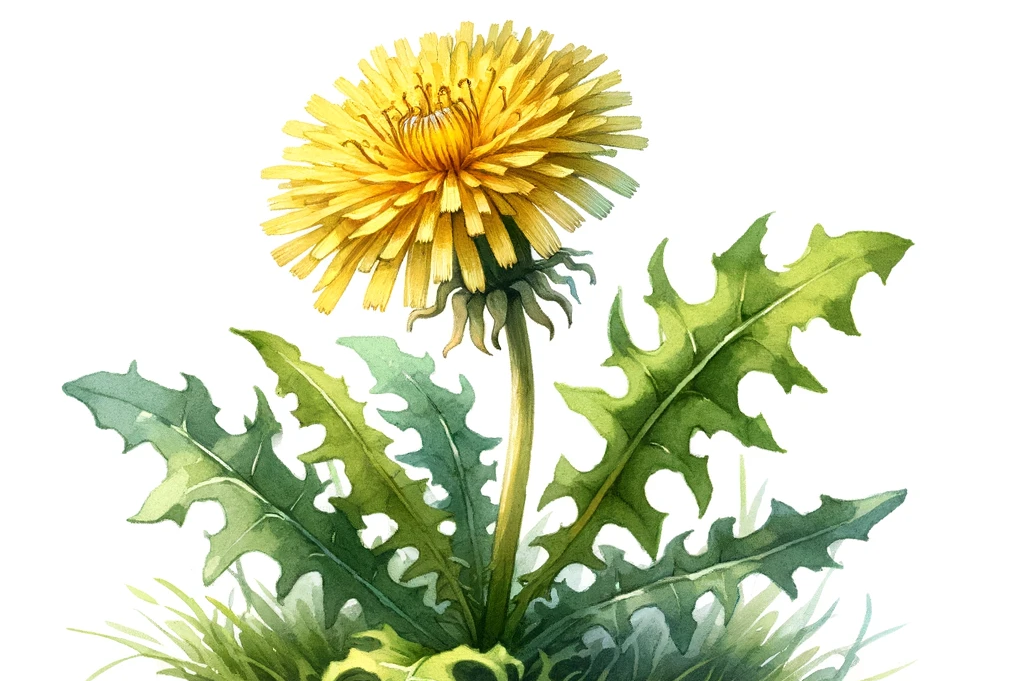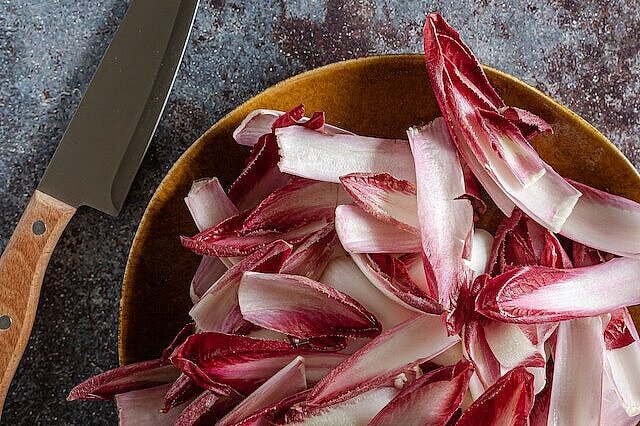Cardoon

Cardoon, also known as Spanish artichoke or cardy, is a thistle-like plant from the Asteraceae family. It is closely related to the artichoke and is grown and eaten as a vegetable because of its fleshy leaf stalks. In this article, you will learn what cardoon is, how to grow, care for and prepare it and what benefits and disadvantages it has for you and your dog.
What is cardoon?
Cardoon (Cynara cardunculus) is a perennial herbaceous plant native to the Mediterranean region. It forms a rosette of long, narrow leaves with spiny edges. The inflorescences are cup-shaped and contain only tubular flowers, which are usually blue or purple. The plant grows up to 2.5 meters high and flowers from August to September.
The vegetable artichoke is a group of cardoon varieties cultivated for their thickened leaf stalks. These are bleached by wrapping them in plastic film before harvesting or storing them in a dark room after harvesting. Bleaching reduces the bitter substances and makes the stems softer and tastier.
How do you grow cardoon?
Cardoon is a frost-sensitive plant that prefers a warm and sunny climate. It can be propagated from seeds, which are sown in seed trays in spring and planted outdoors after the last frosts. The plants need a loose, nutrient-rich and well-drained soil as well as regular watering. To whiten the leaf stalks, they should be wrapped or covered with foil or straw about four weeks before harvesting.
Harvesting takes place in fall or winter, depending on the variety and climate. Cut the stems just above the ground and remove the leaves and thorns. The stalks can be eaten fresh or frozen.
How do you prepare cardoon?
Cardoon has a slightly bitter and artichoke-like taste. The bleached stems can be eaten raw or cooked. They are suitable for salads, soups, casseroles or as a side dish with meat or fish, for example. To prepare the stalks, they must first be washed and cut into pieces. They can then be blanched in salted water or steamed until soft. They can then be seasoned or processed as desired.
A typical recipe for cardoon is the Italian specialty "bagna cauda", a warm sauce made from garlic, anchovies and butter, in which the cooked stems are dipped. Another variation is the French "gratin de cardons", in which the stalks are covered with a béchamel sauce and baked with cheese.
What advantages does cardoon have for you?
Cardoon is not only a delicious vegetable, but also a healthy one. It contains lots of vitamins, minerals and fiber as well as secondary plant substances such as flavonoids and quinic acid derivatives. These have various positive effects on the body, such as
- Promoting digestion and metabolism
- Lowering the cholesterol level
- Protecting the liver
- Detoxification of the body
- Strengthening the immune system
- Prevention of inflammation
- Improving skin health
What disadvantages does cardoon have for you?
Cardoon also has some disadvantages that you should be aware of before eating it. For one, it can cause allergic reactions in some people, especially if they are sensitive to composite plants. Symptoms can include skin rashes, itching, swelling or breathing difficulties. If you suspect an allergy, you should consult a doctor and avoid cardoon.
On the other hand, excessive consumption of cardoon can lead to gastrointestinal complaints such as flatulence, diarrhea or nausea. This is because the plant contains bitter substances that stimulate digestion but can also be irritating. To avoid this, you should only eat cardoon in moderation and chew it well.
What are the advantages and disadvantages of cardoon for your dog?
Cardoon is not poisonous for your dog, but it is not particularly nutritious either. It can be used as an occasional treat or as a filler for homemade dog food, but it should not form the main part of their diet. The benefits of cardoon for your dog are similar to those for you: it can aid digestion, boost the immune system and improve skin health.
The disadvantages of cardoon for your dog are also similar to those for you: it can cause allergic reactions or gastrointestinal discomfort if your dog is sensitive to it or eats too much of it. You should also make sure that your dog does not swallow any cardoon spines or leaves, as these can cause injuries to the mouth or digestive tract.
Cardoon is an interesting and versatile plant that you can grow, care for and prepare as a vegetable. It has many health benefits for you and your dog, but also some disadvantages that you should be aware of. If you enjoy cardoon in moderation and watch out for possible intolerances, you can enjoy its unique flavor.
If you notice any signs of hypersensitivity or poisoning in your dog, you should see your vet immediately. We are not a substitute for a vet, but we try to be as accurate as possible. Every dog reacts differently and we recommend you get a second opinion or consult your vet if in doubt.
Stay healthy and take good care of your four-legged friend!😊
Similar to Cardoon
Artichokes are the flower buds of a type of thistle that originally comes from the Mediterranean region. They have been prized as a delicacy for centuries and have a slightly bitter taste....
Chicory root belongs to the daisy family and is closely related to dandelion and artichoke. The root is around 30 to 60 cm long and has a brown skin and white flesh. It contains a lot of fiber,...
Dandelion is a perennial herbaceous plant from the composite family. It has a long taproot that reaches up to one meter deep into the ground. All parts of the plant contain a white, milky sap that...
Endive contains lots of vitamins, minerals and fiber. These can support your dog's digestion and strengthen its immune system. Endive also has a high water content, which keeps your dog hydrated....



